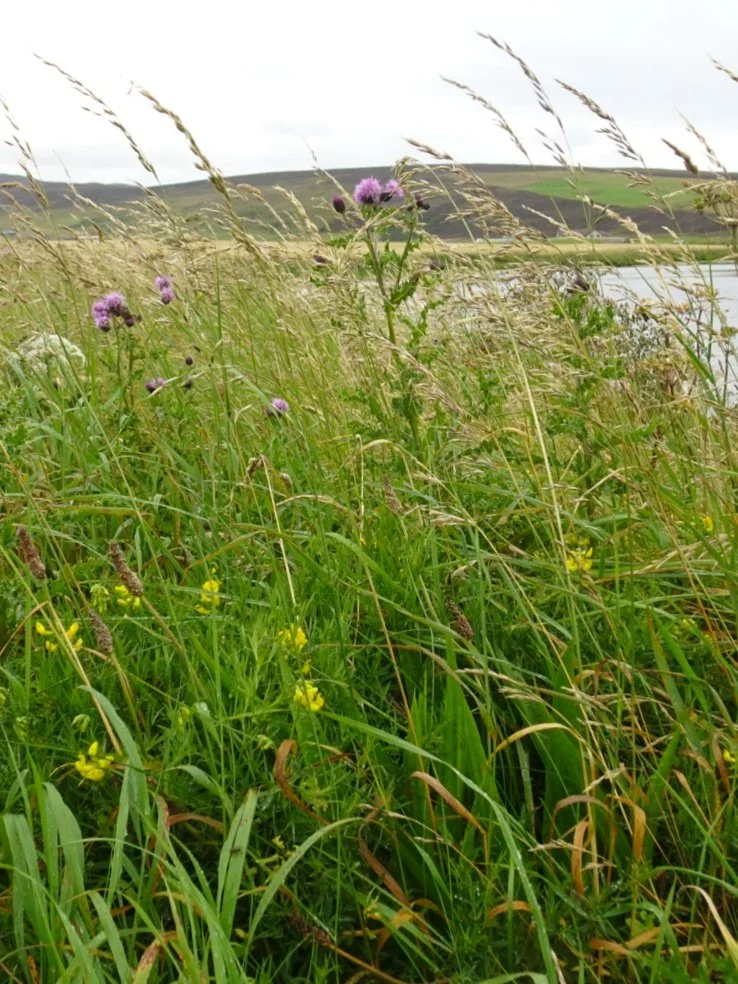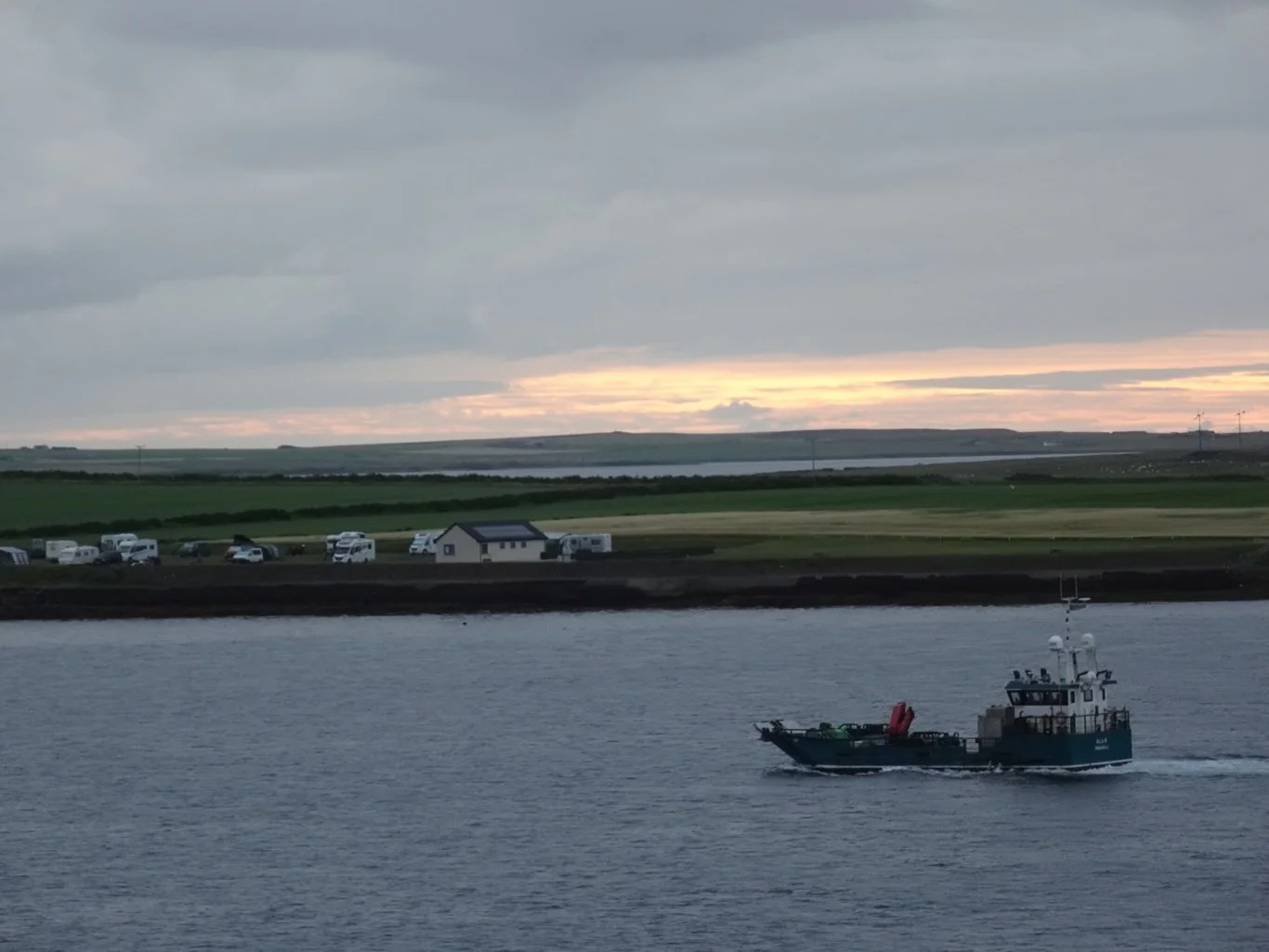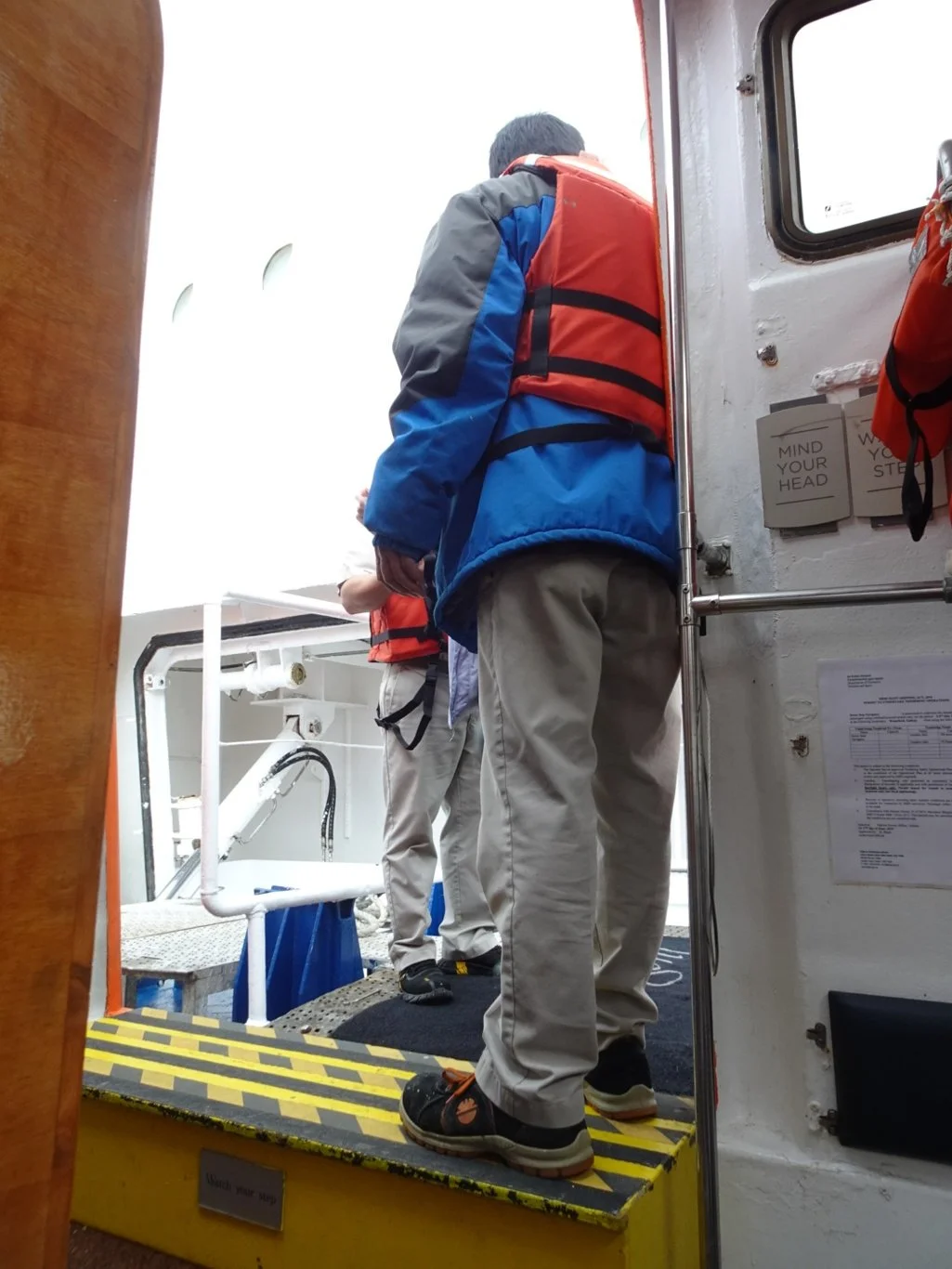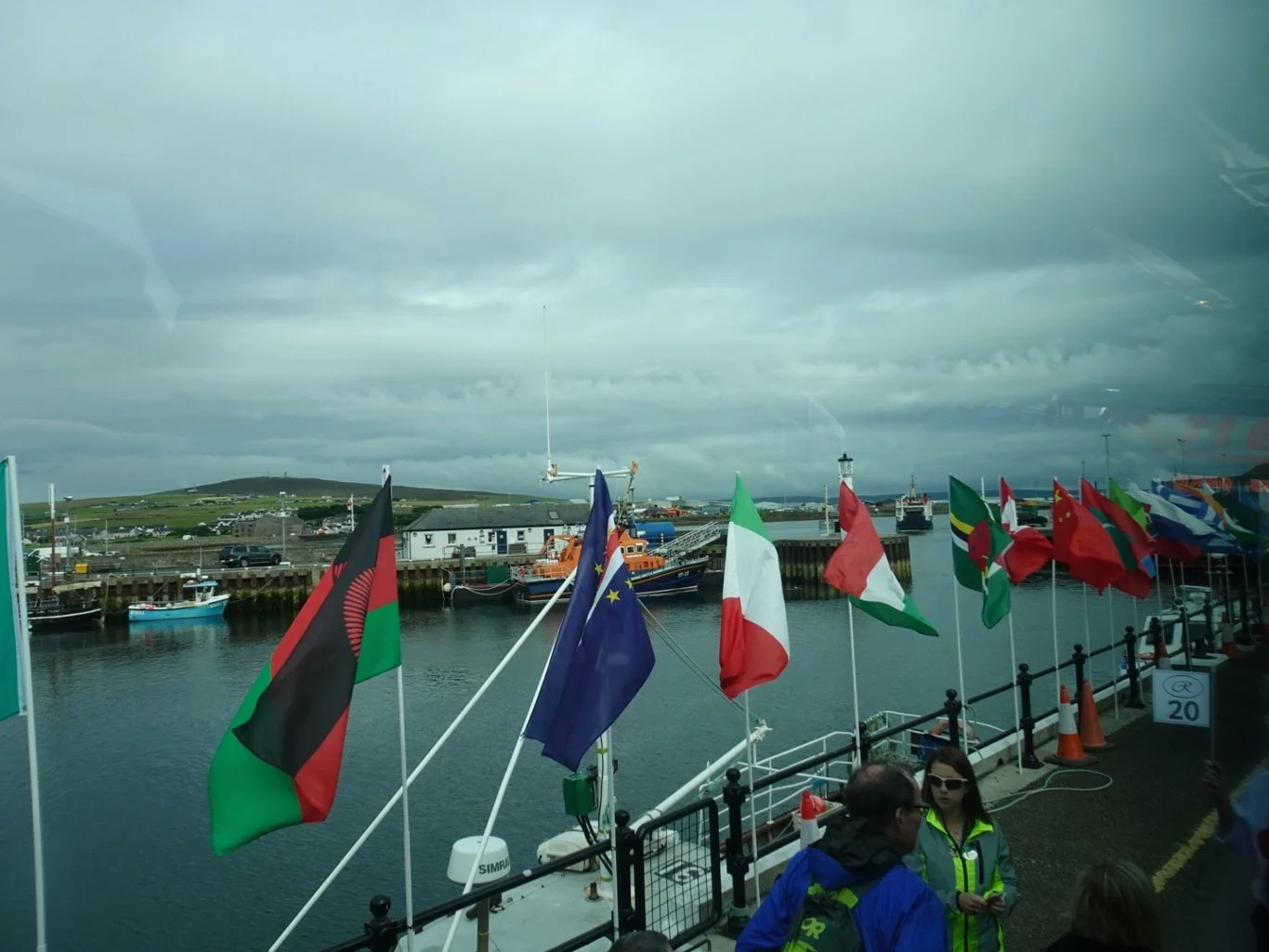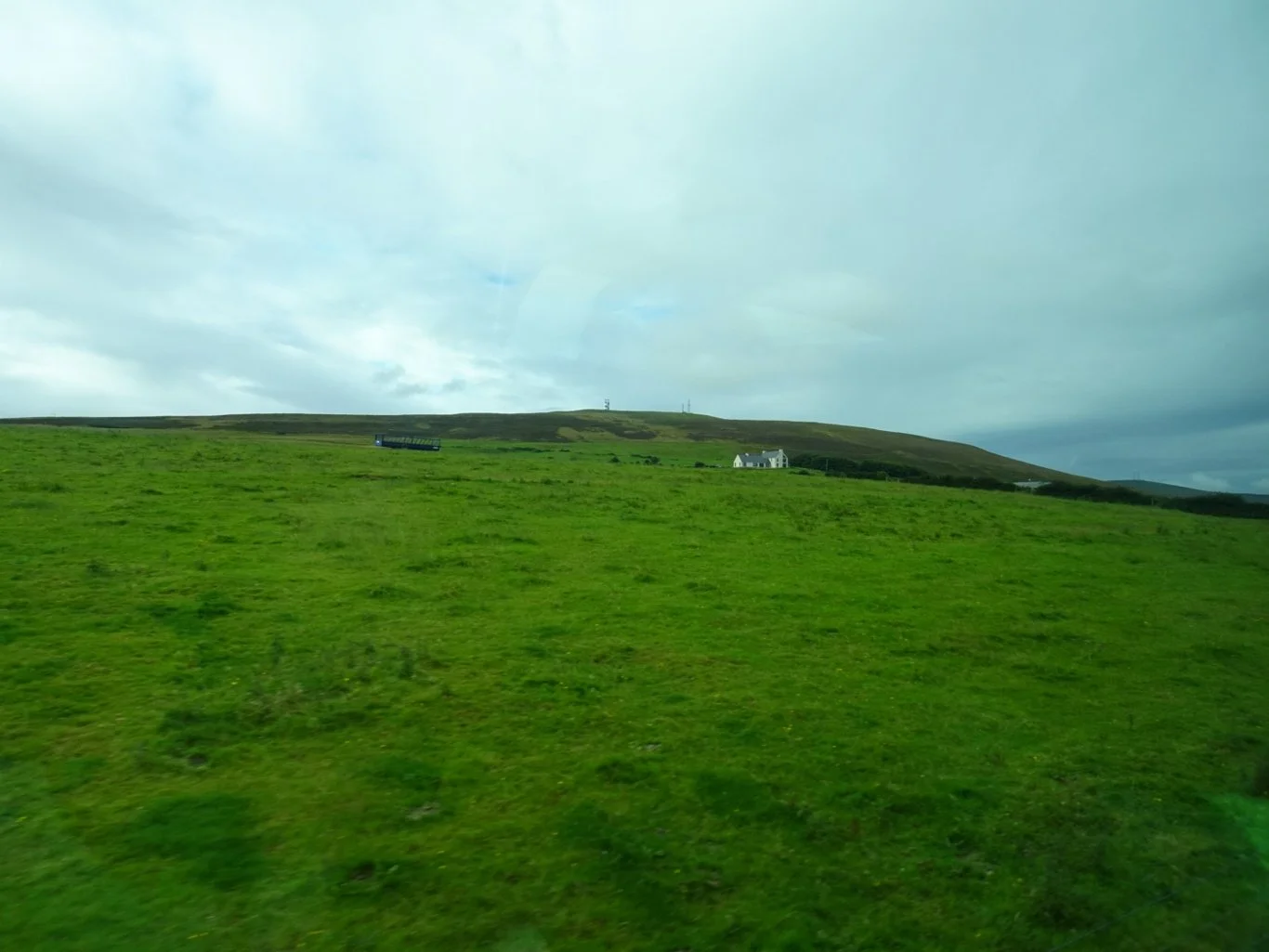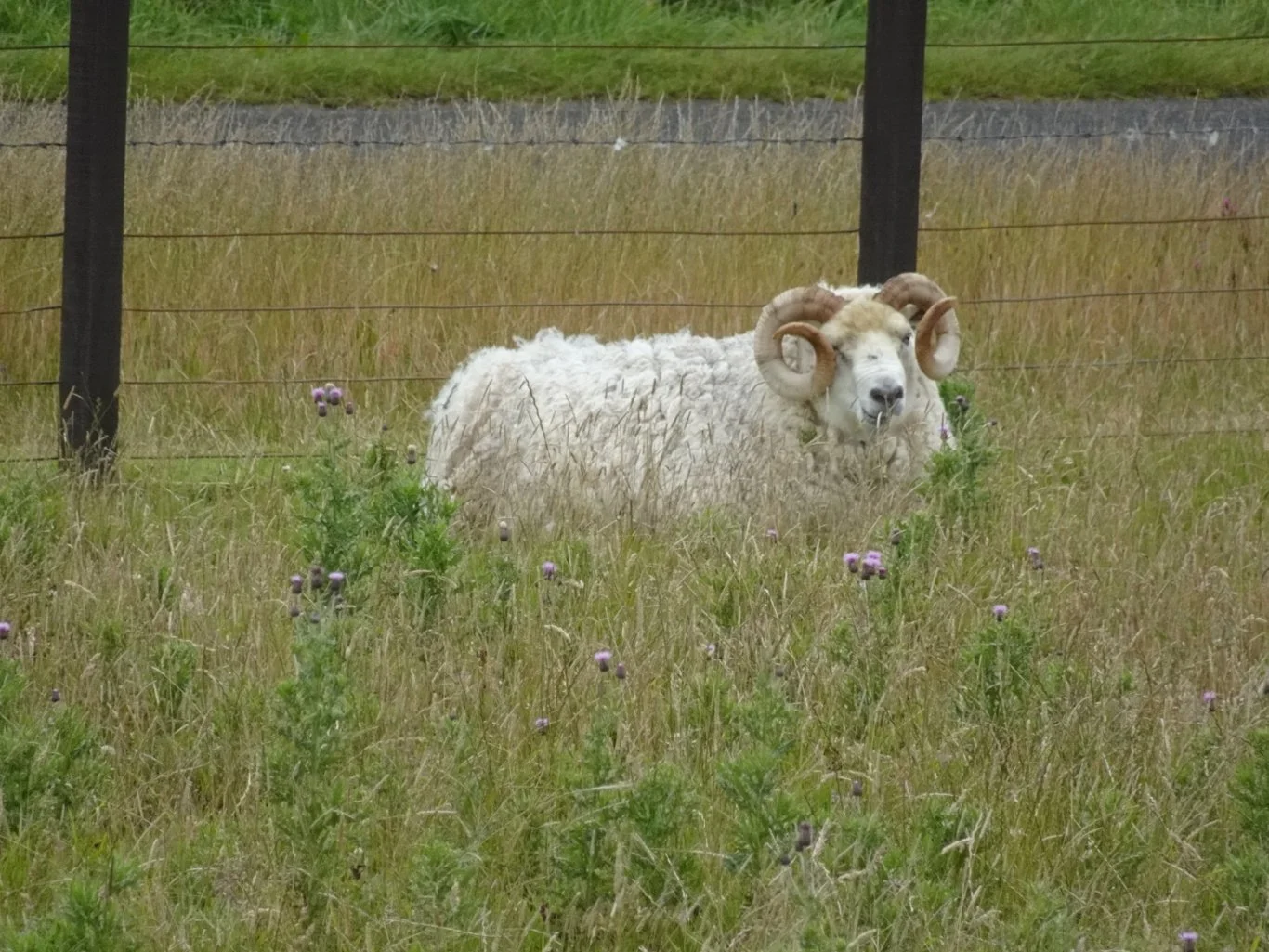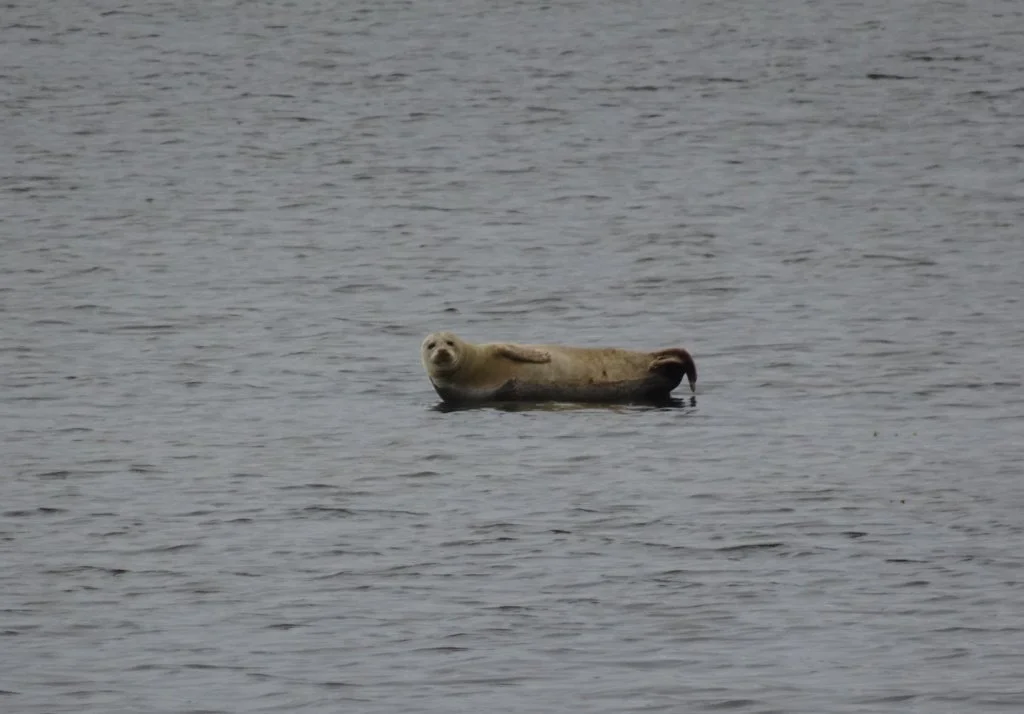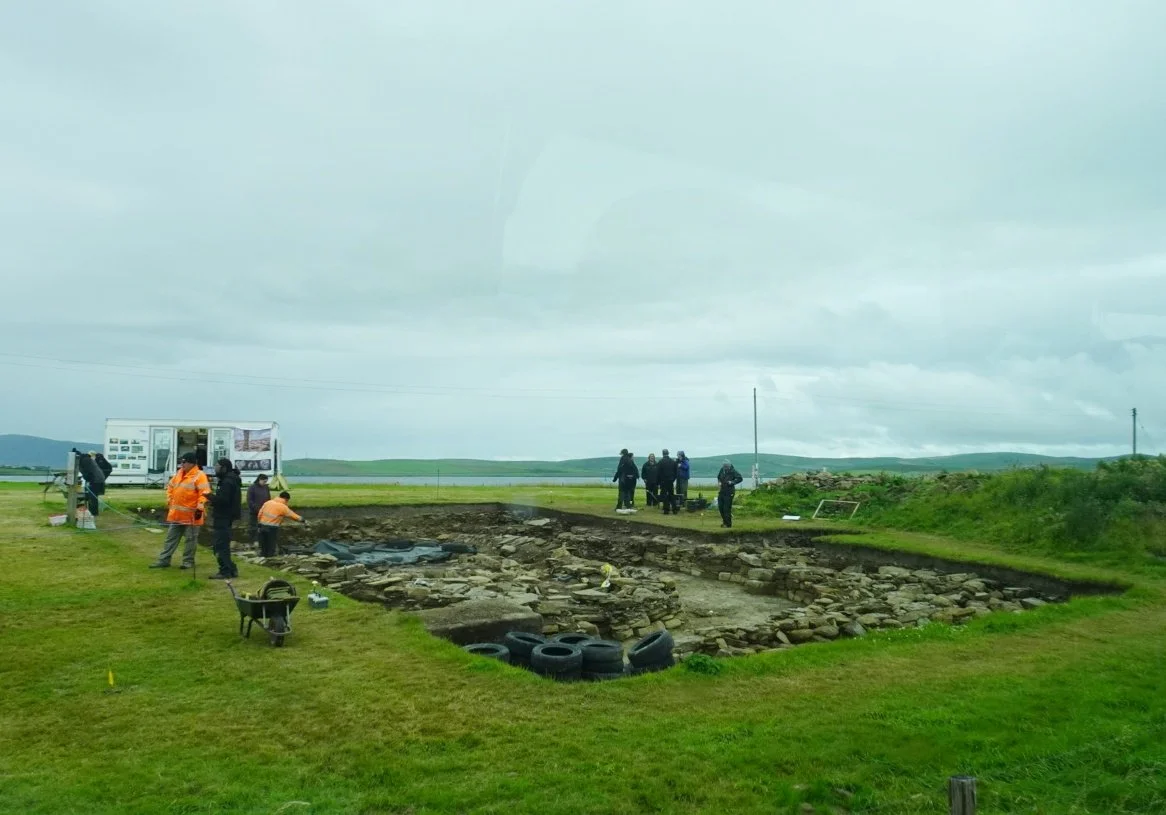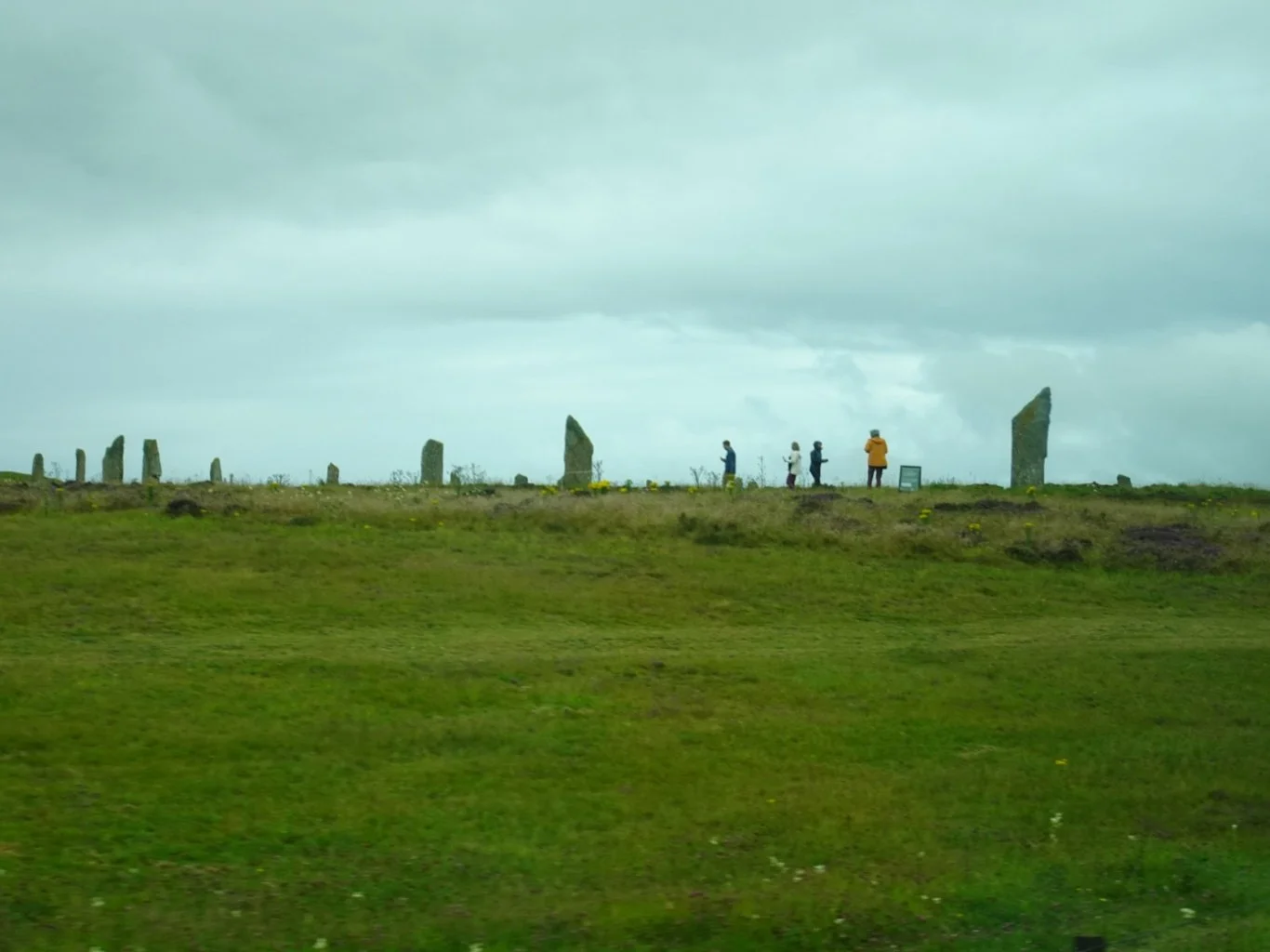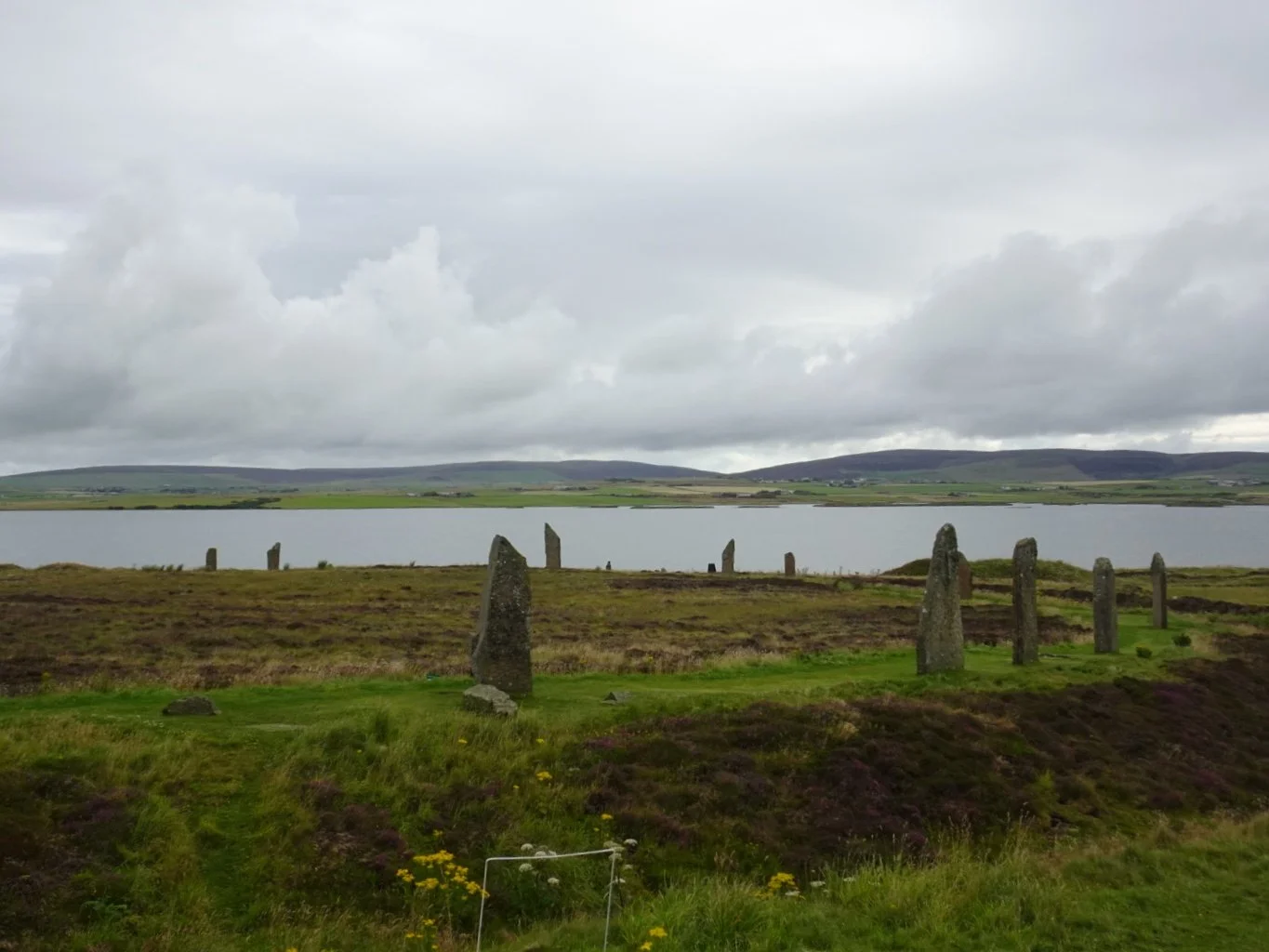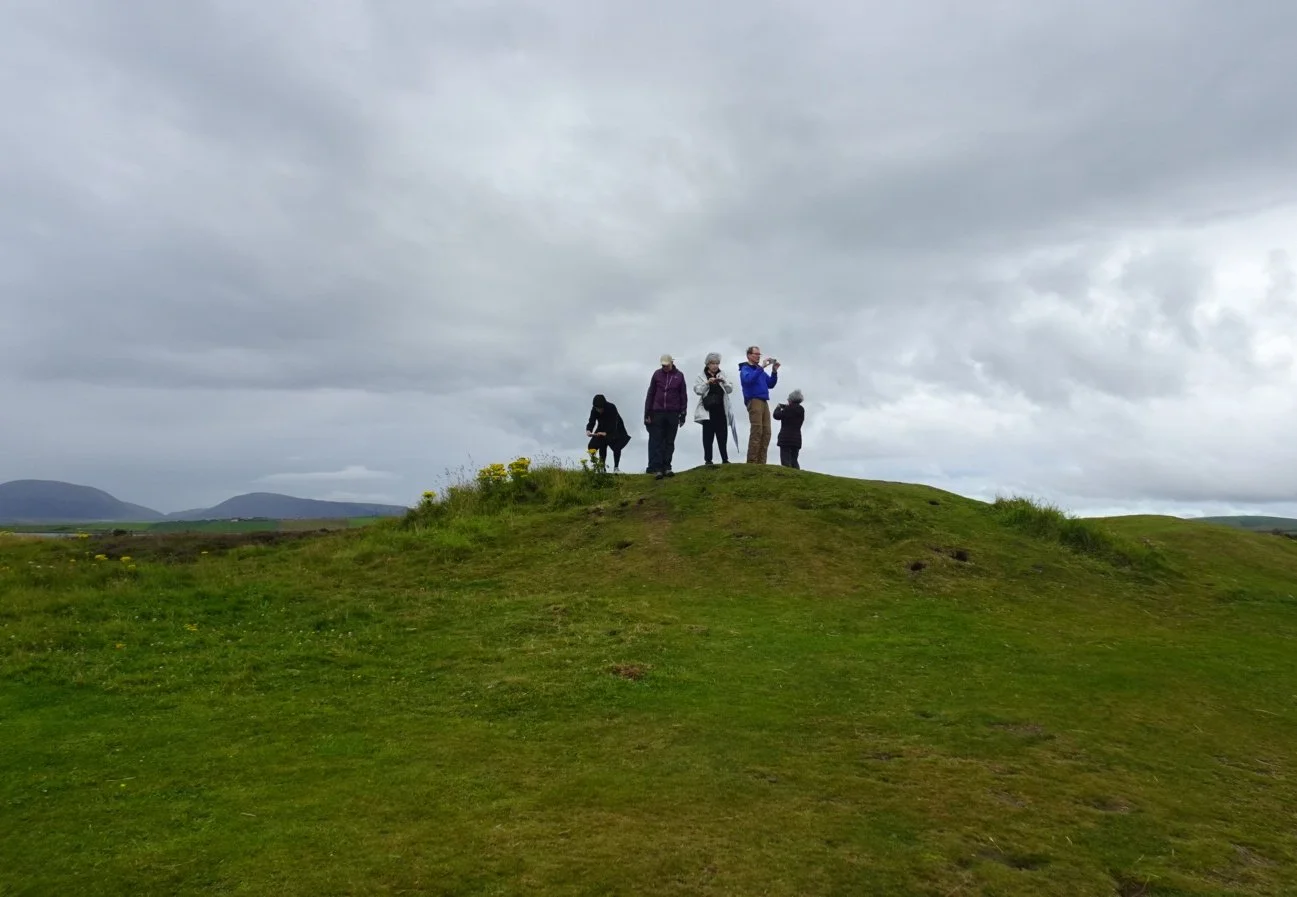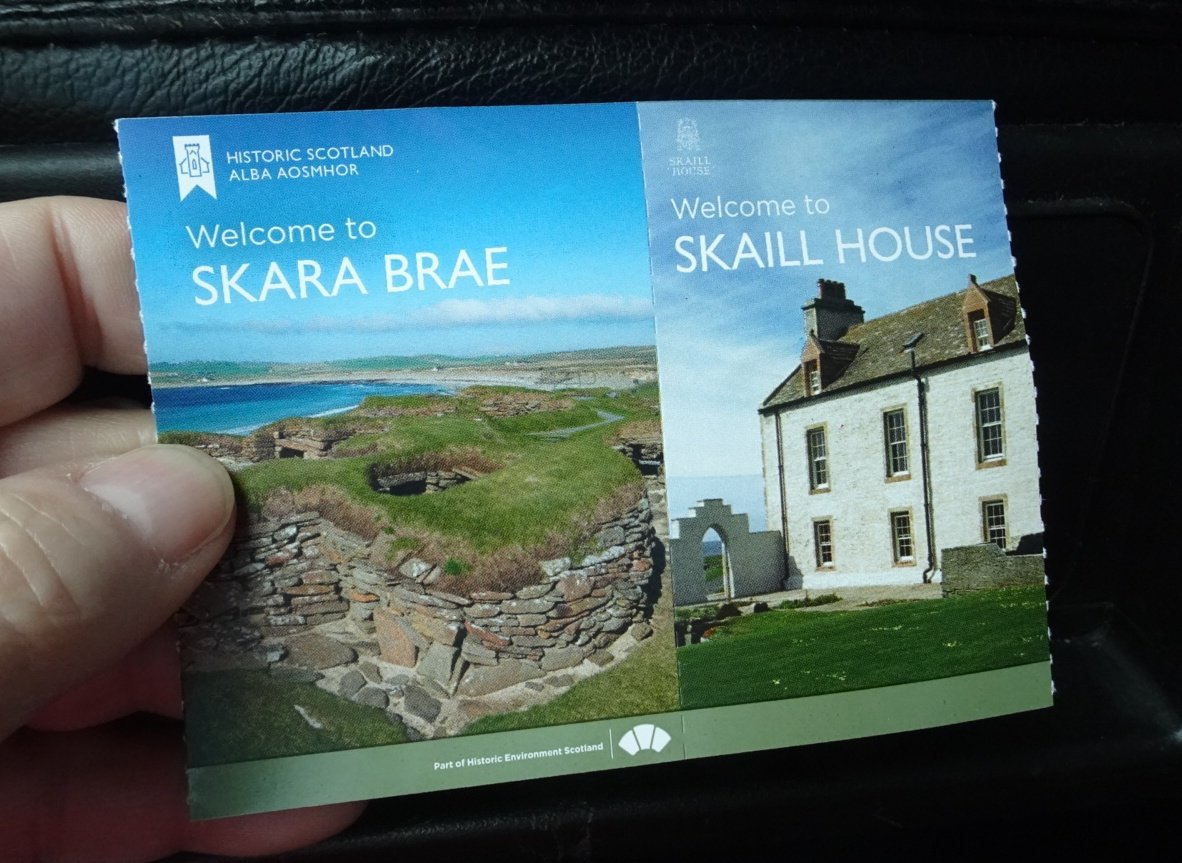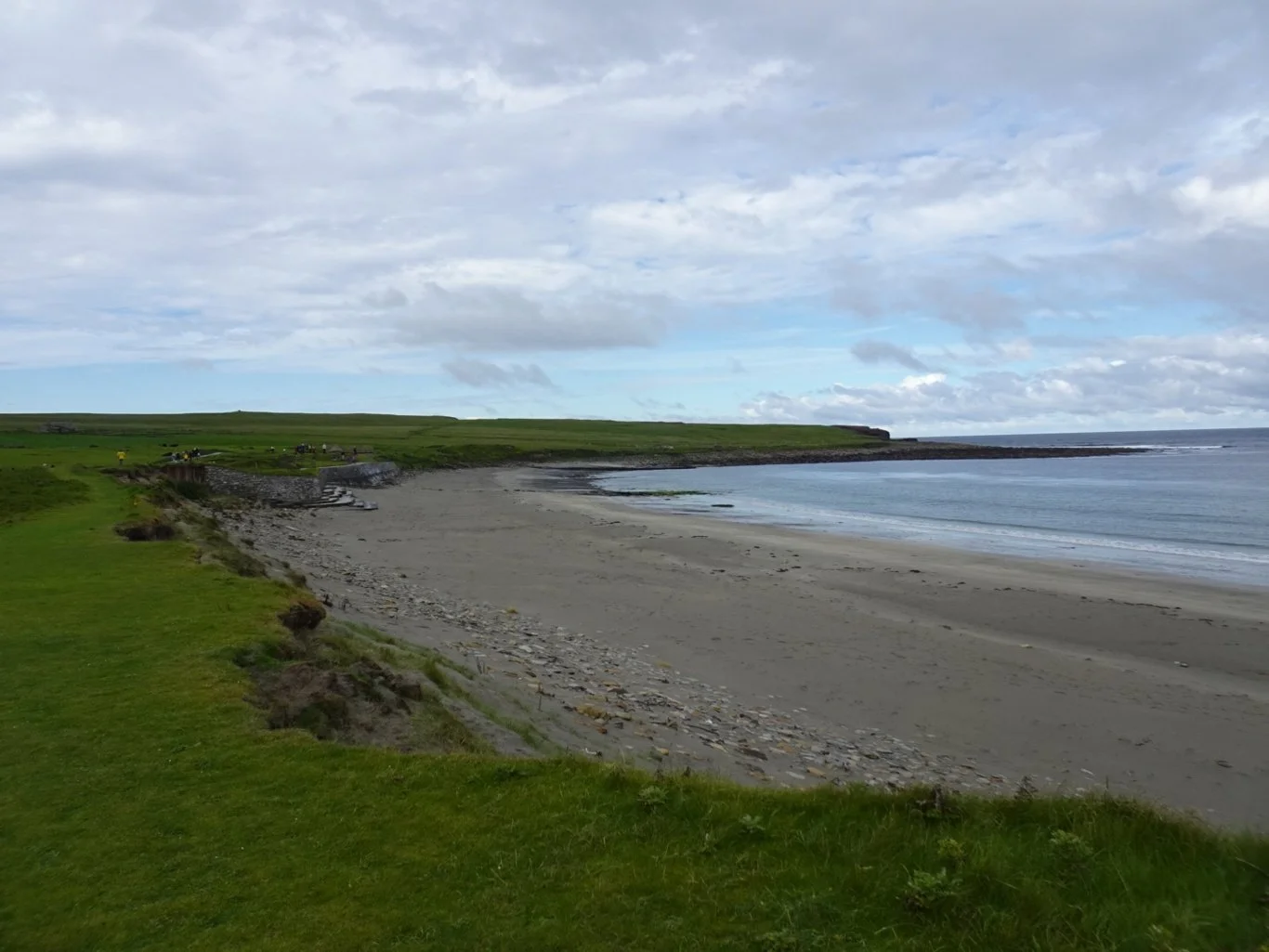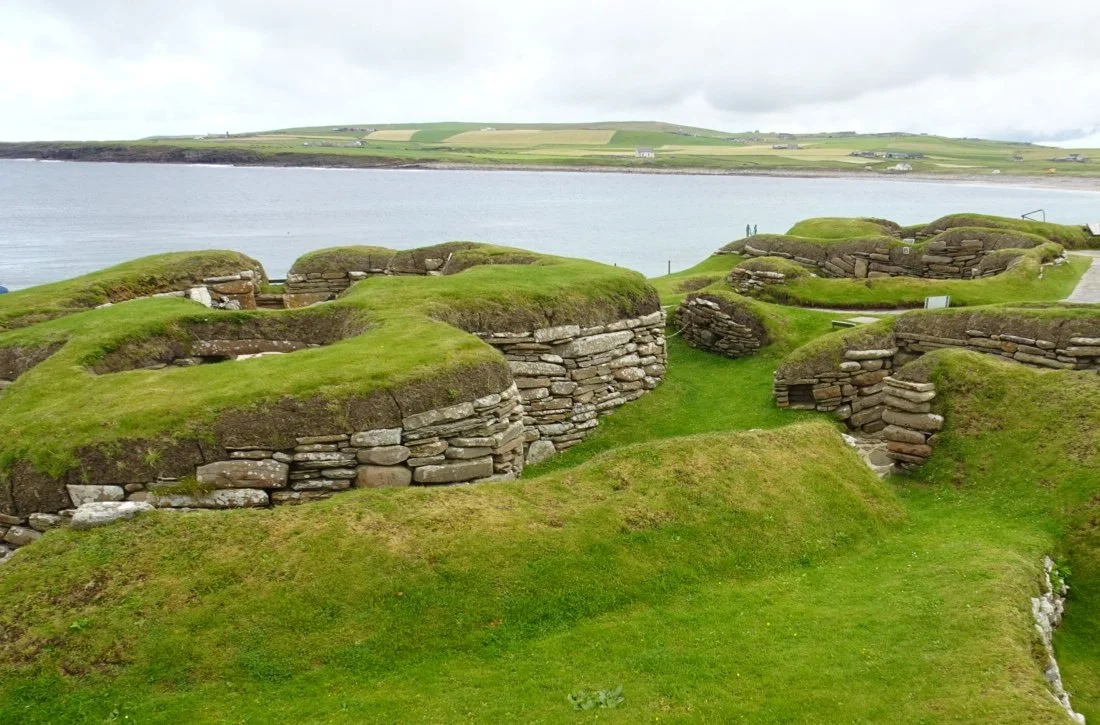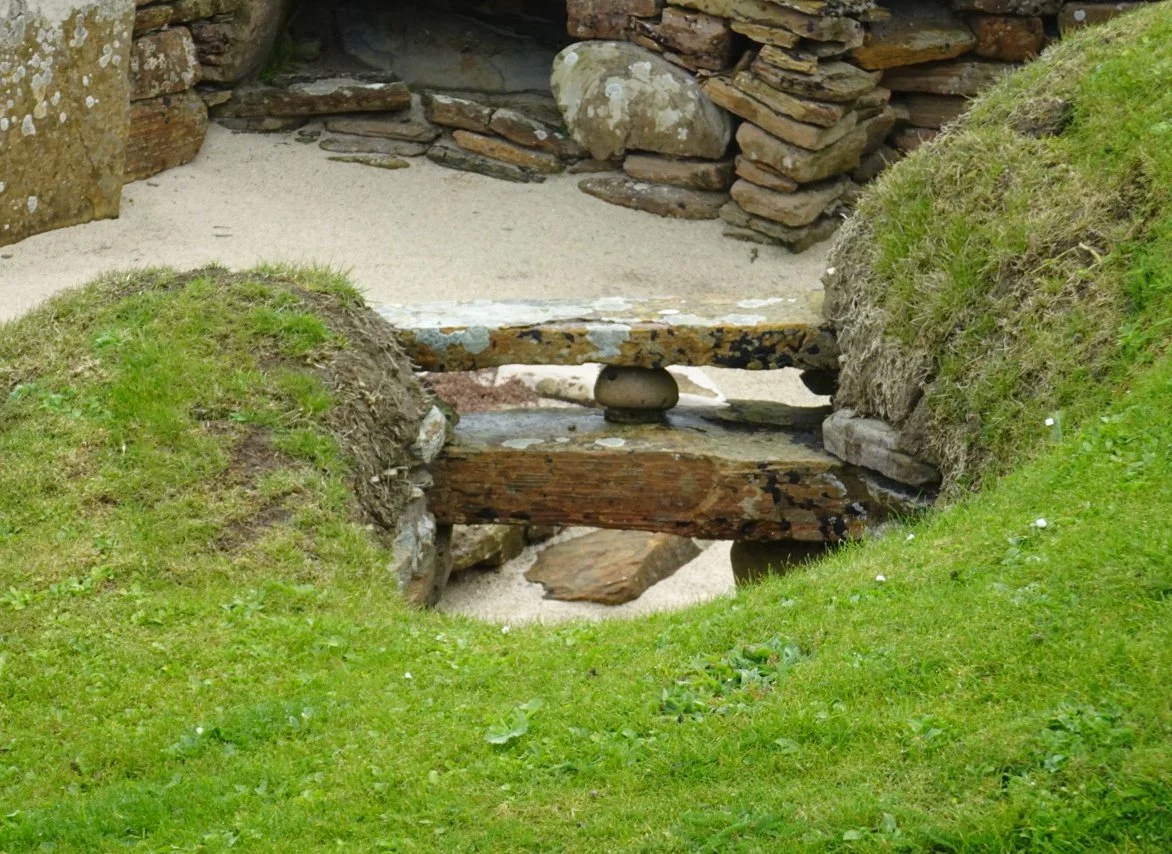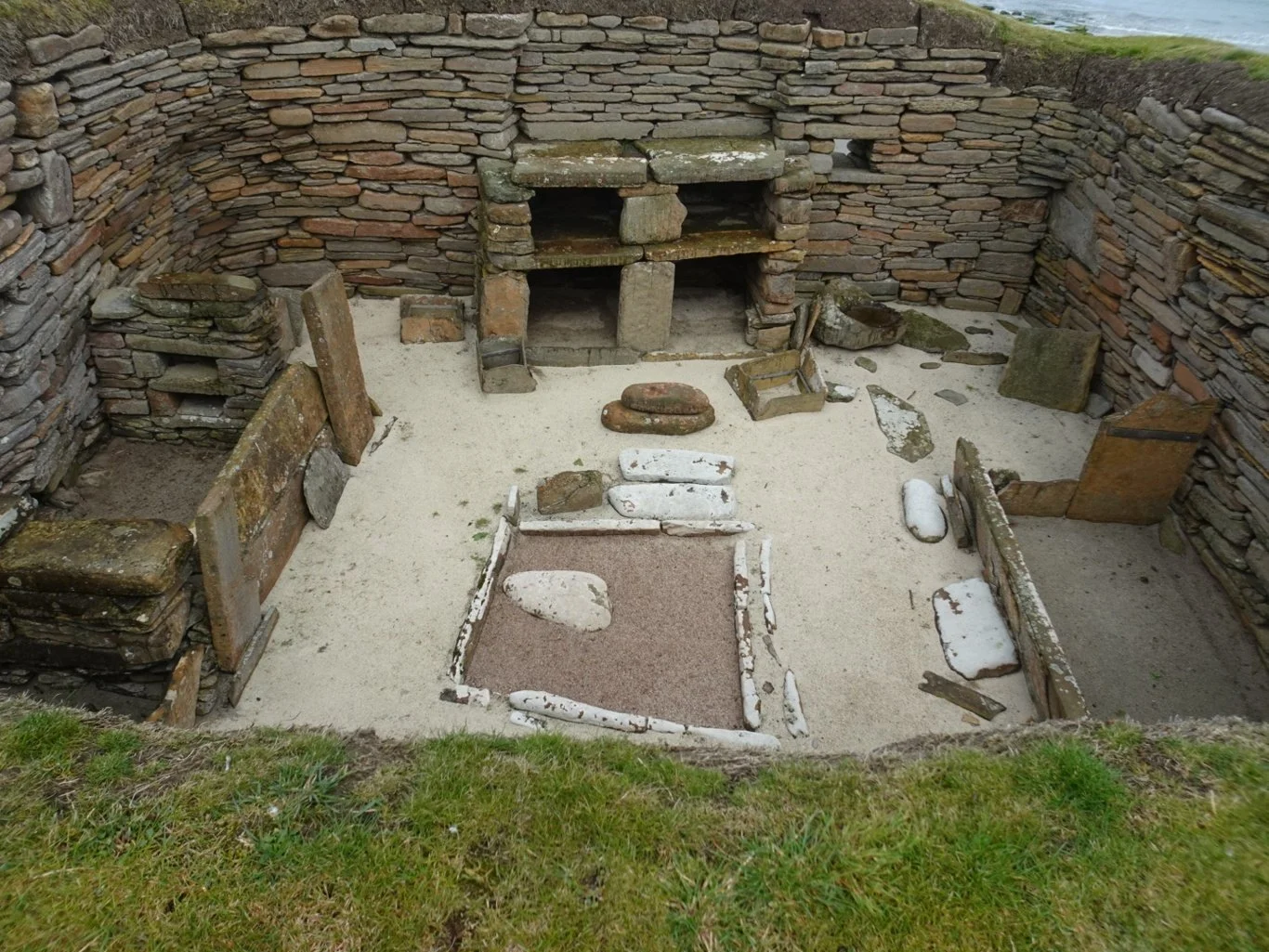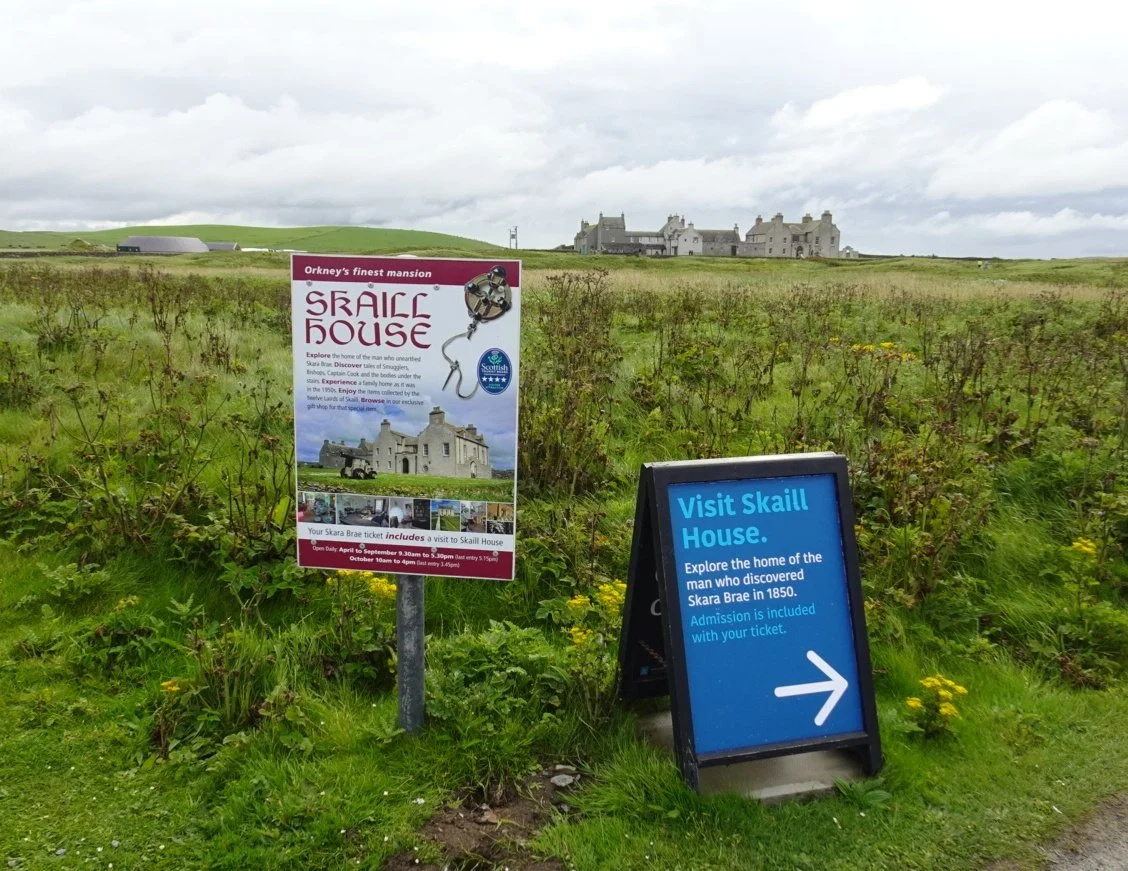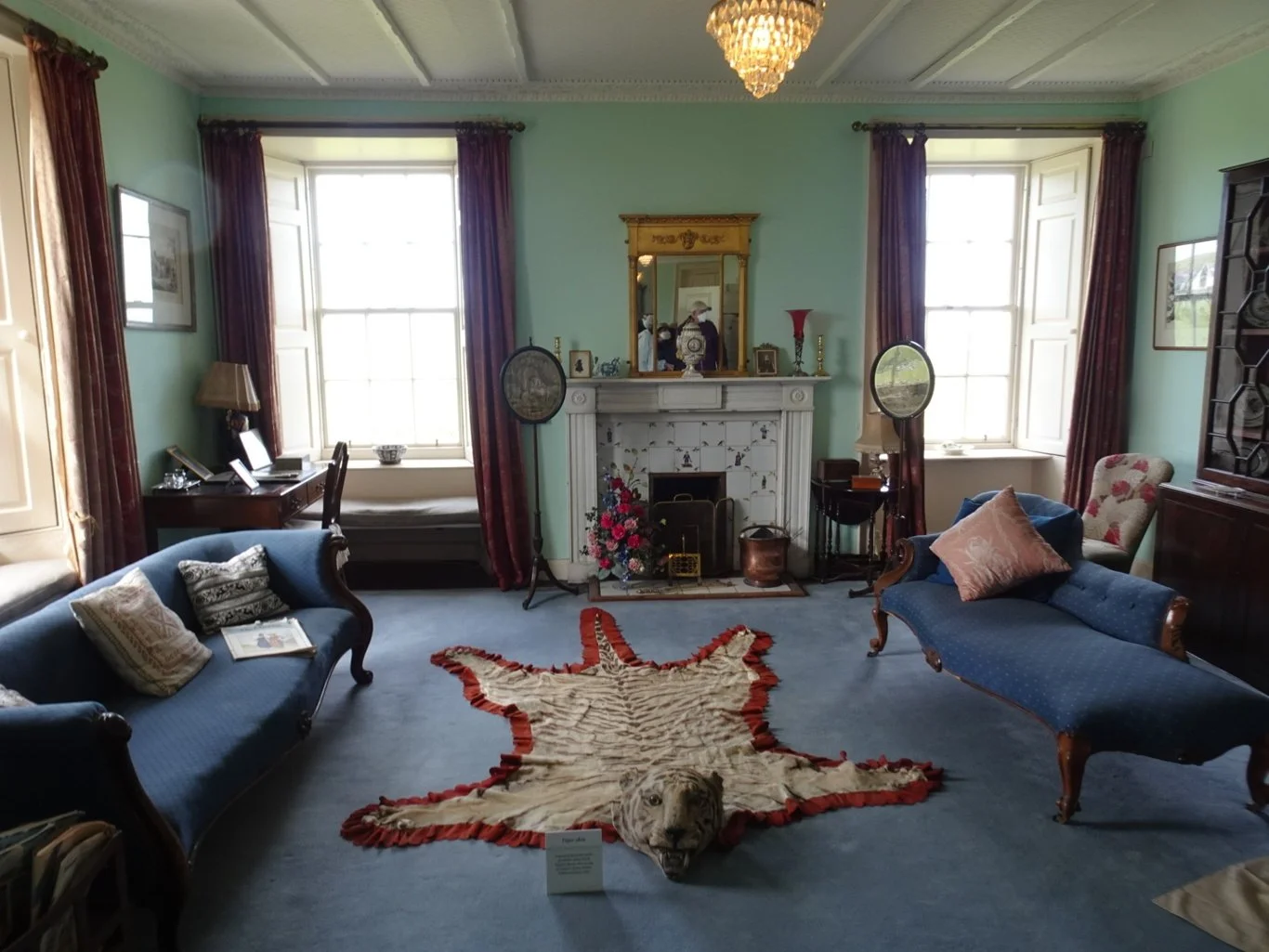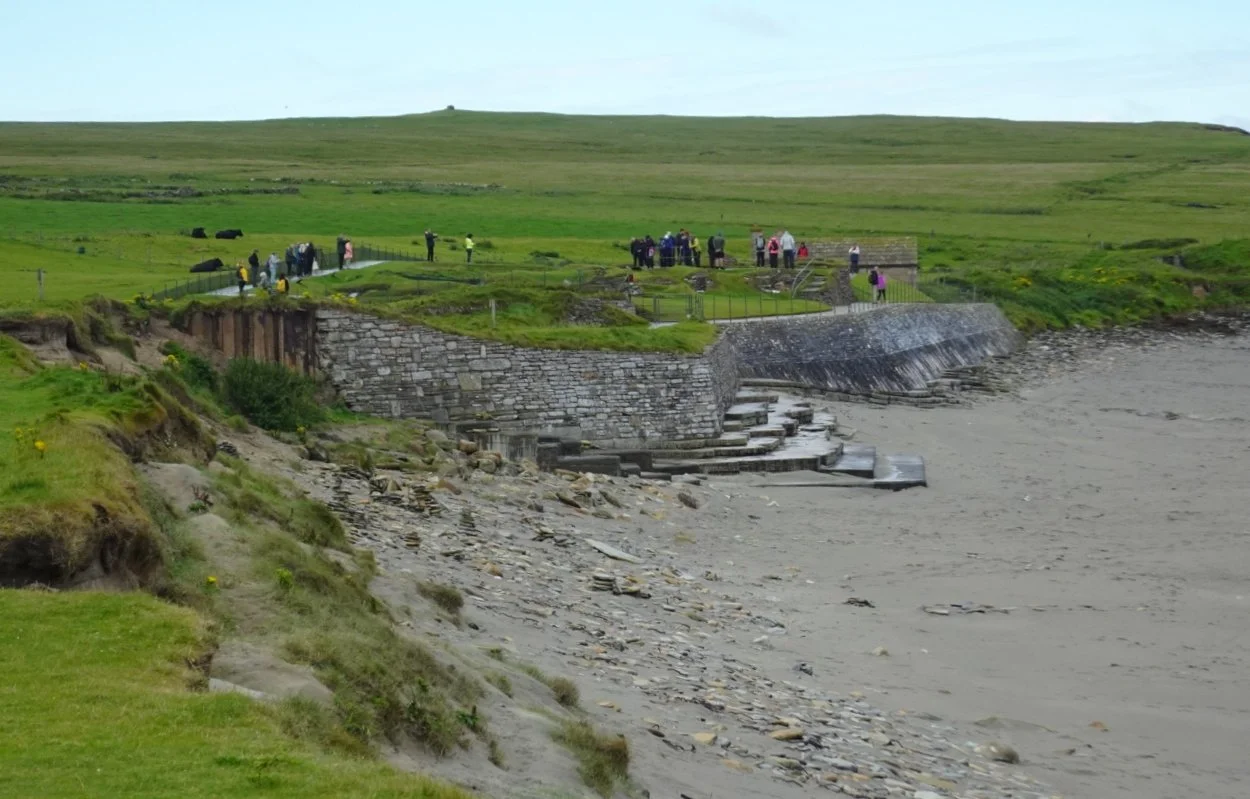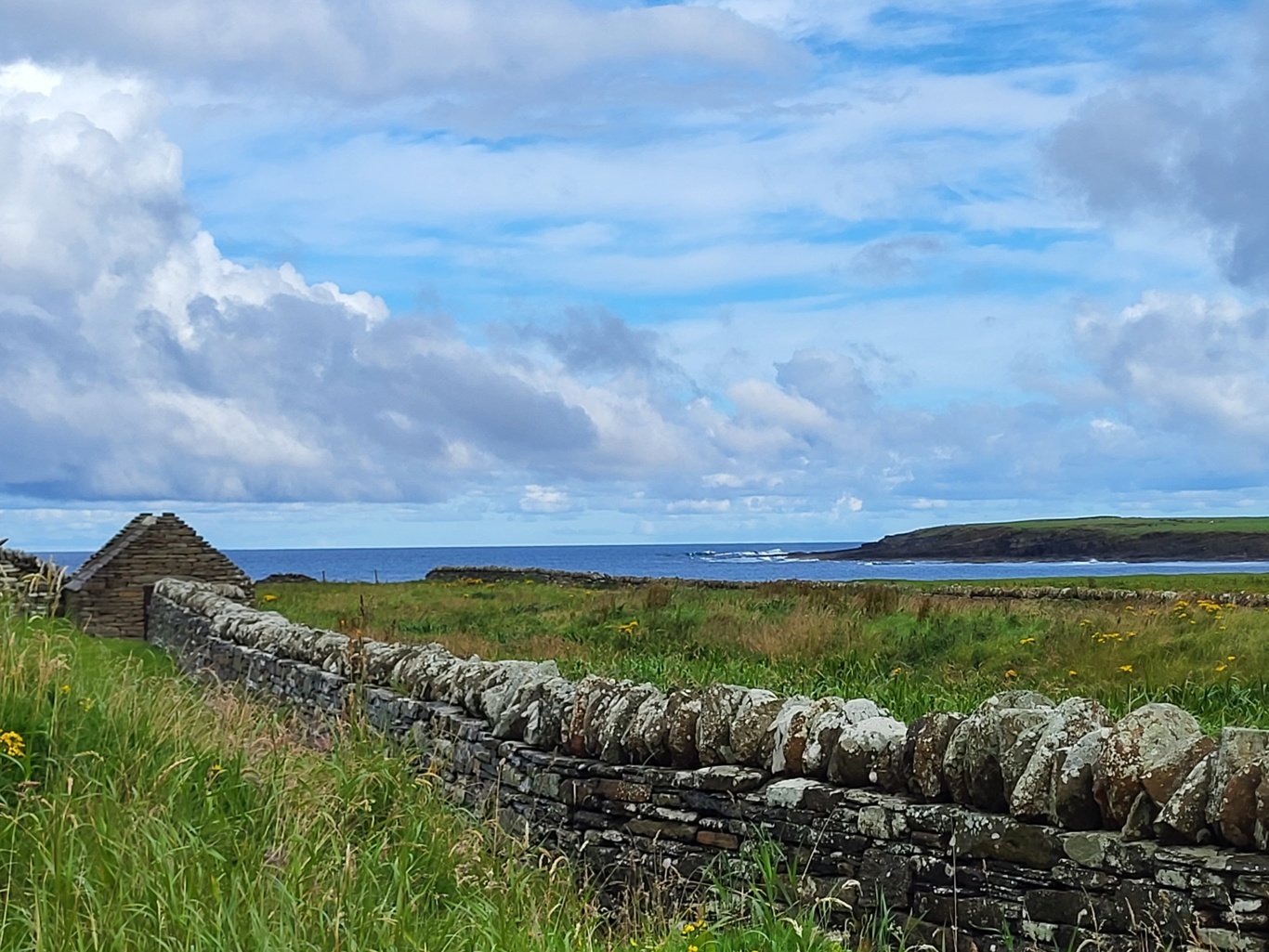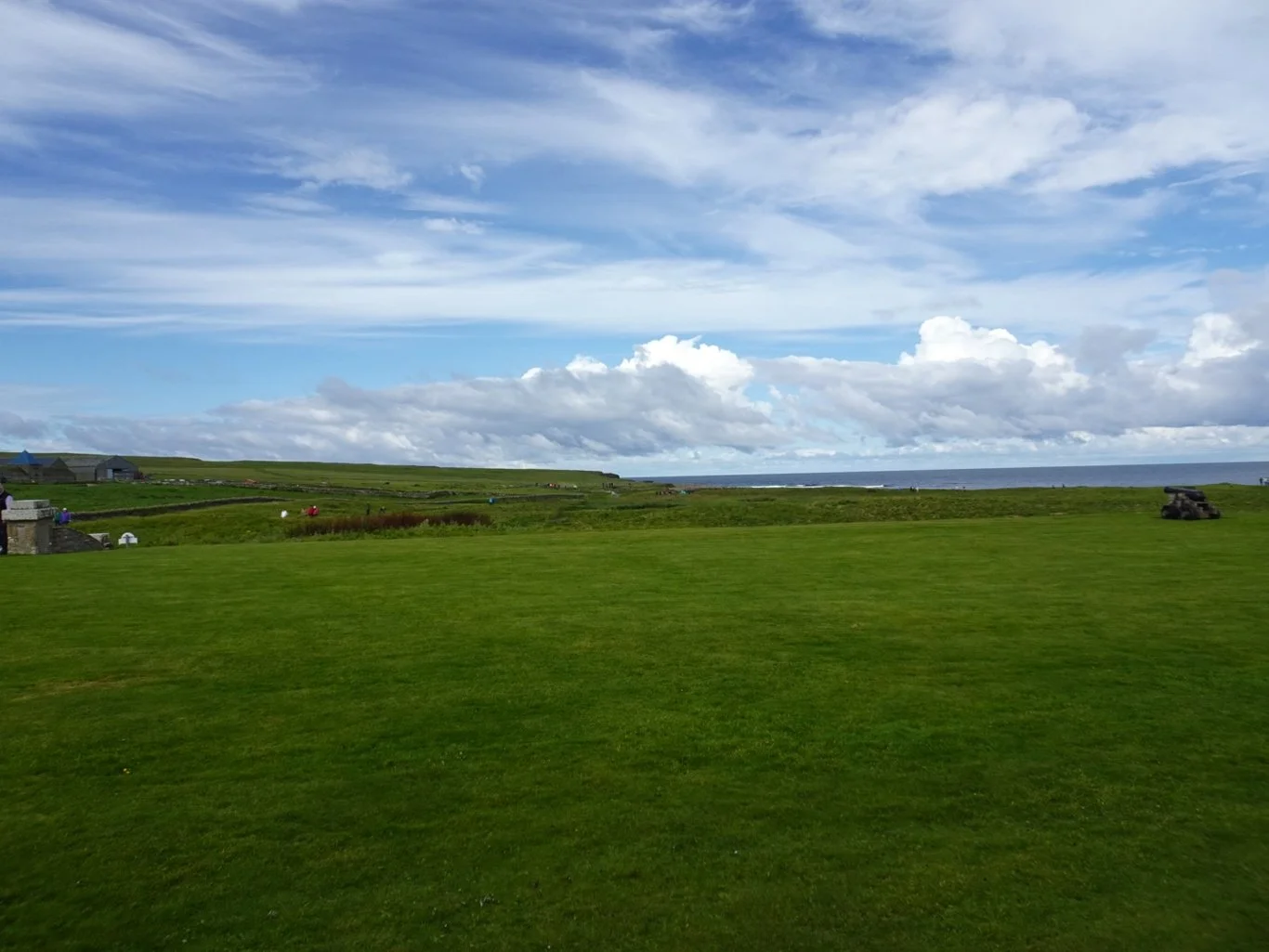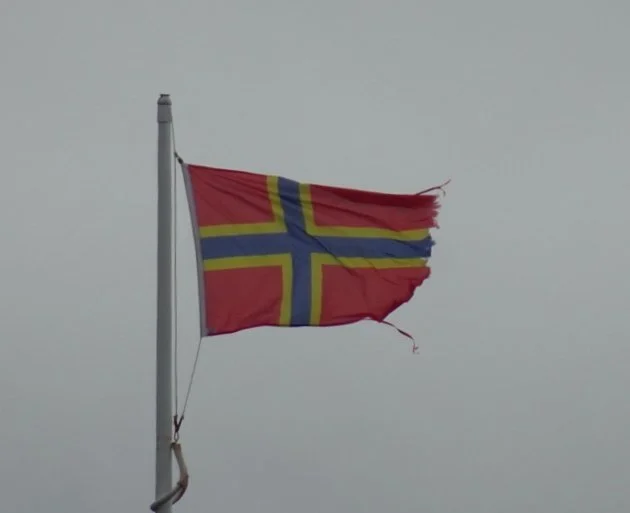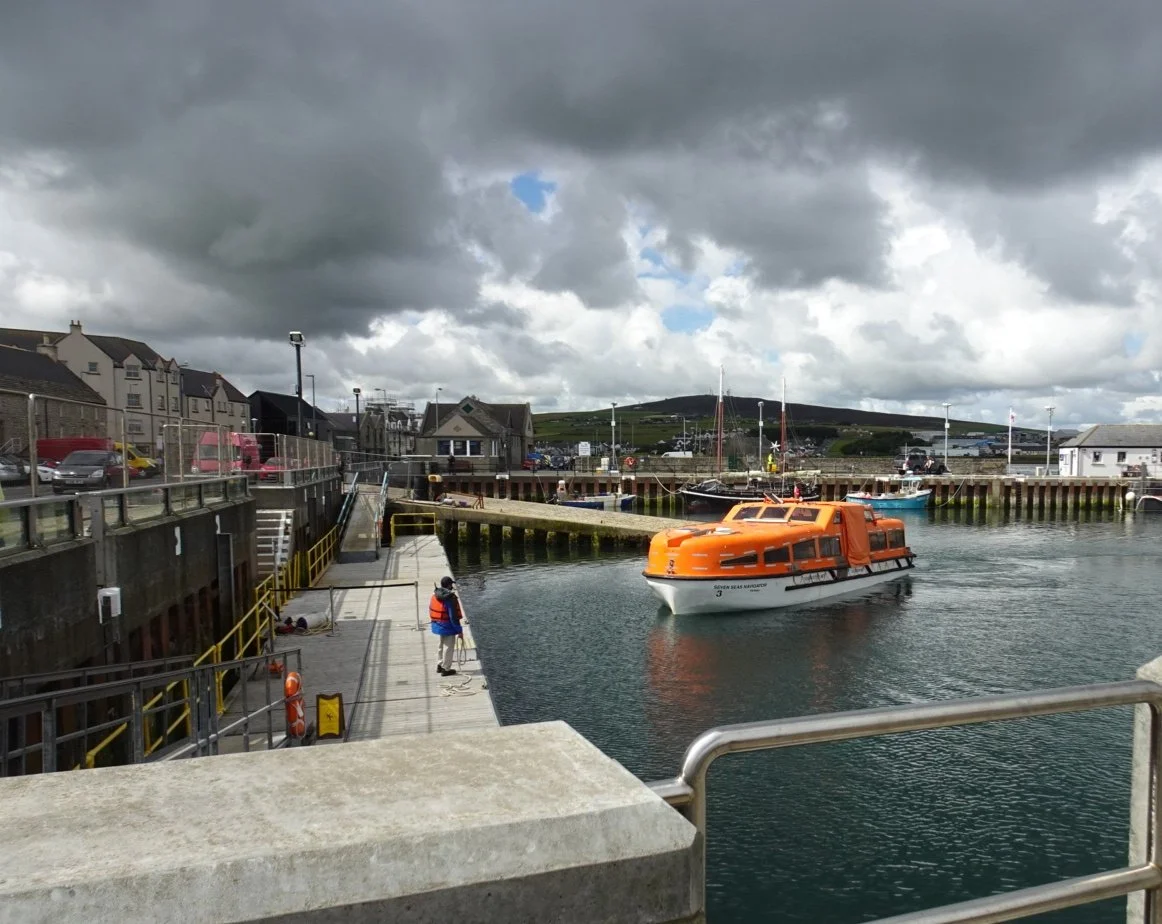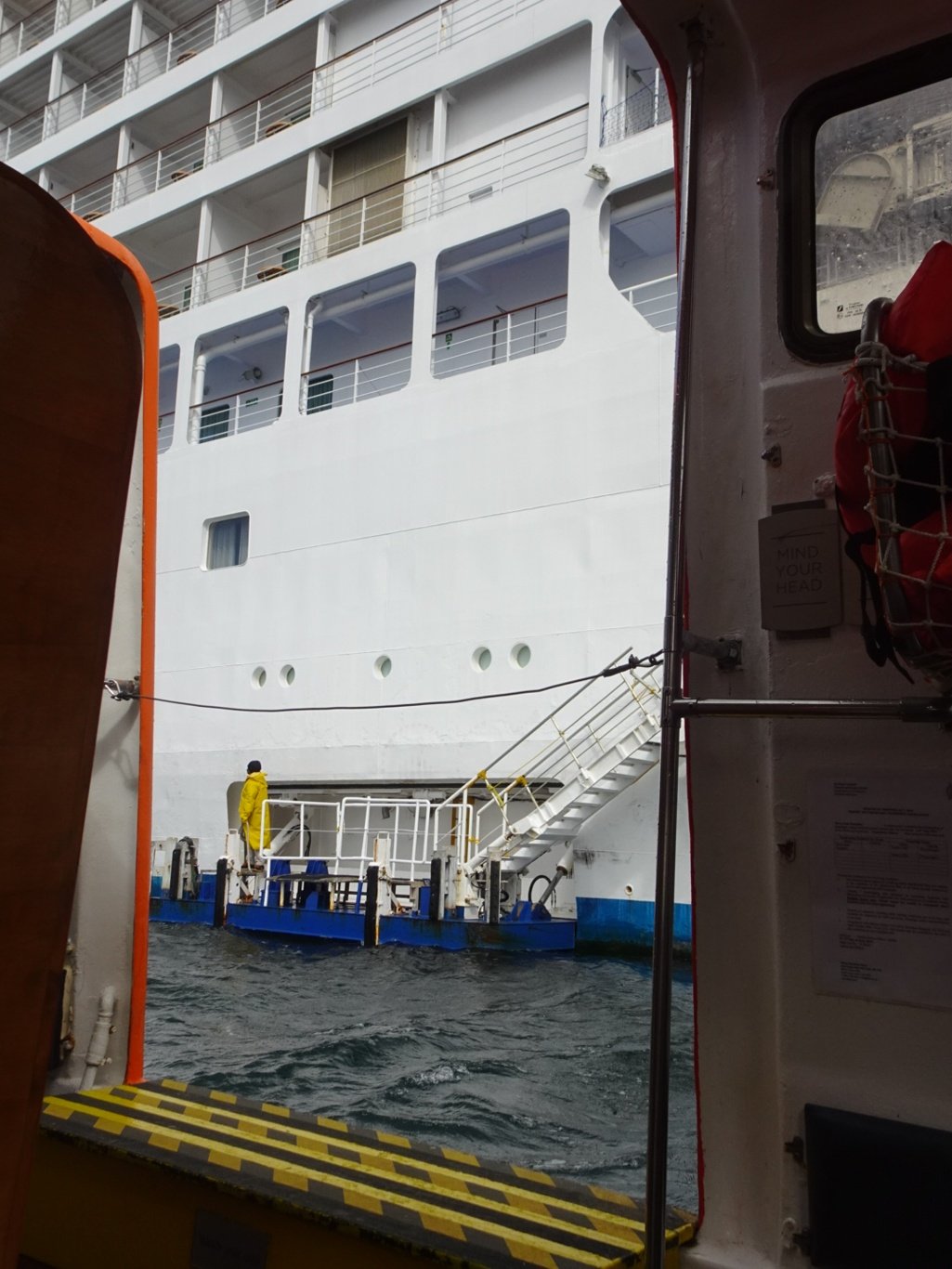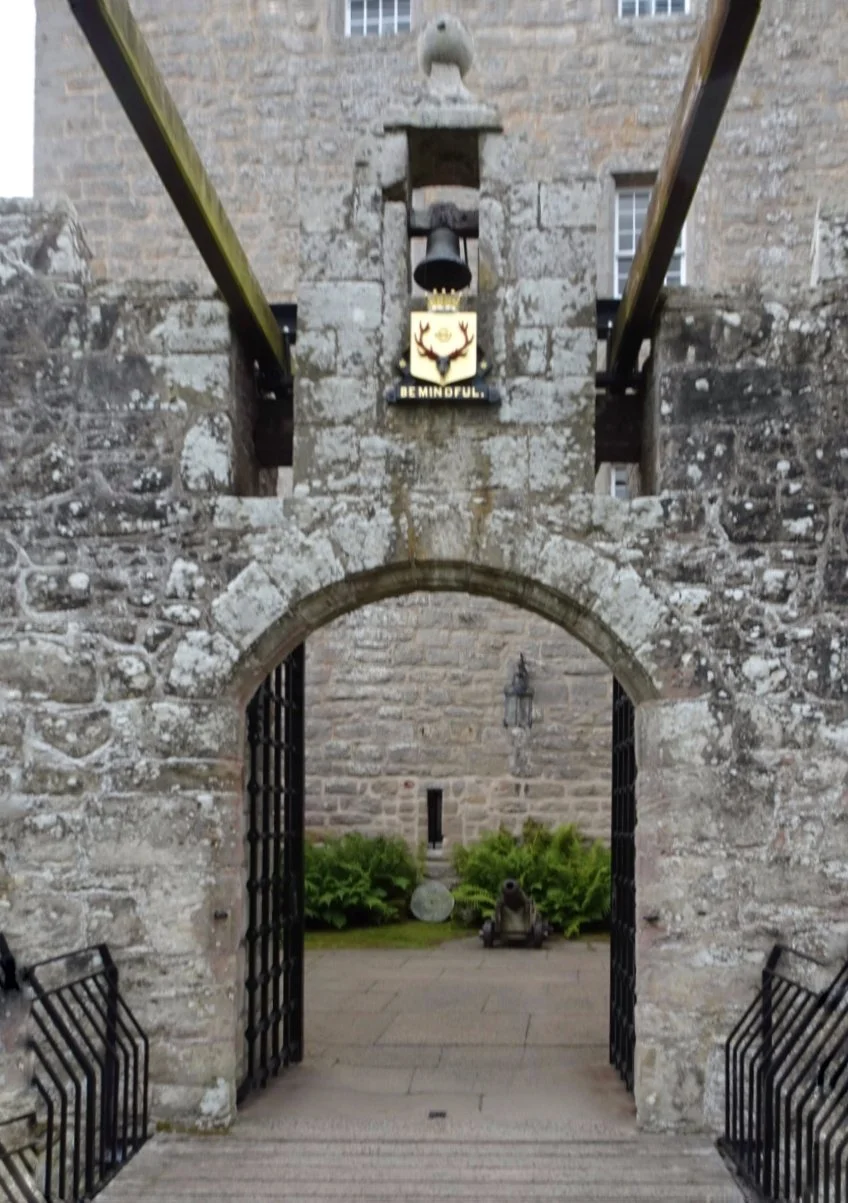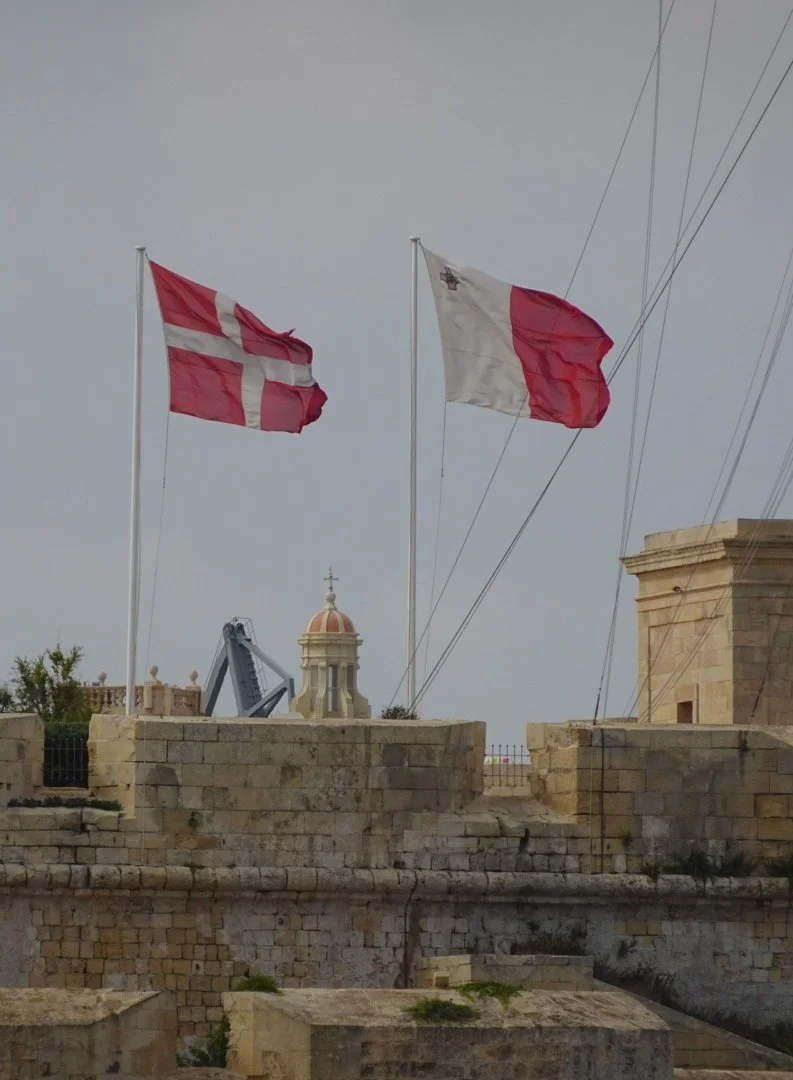Kirkwall, Orkney
We had an early start in Kirkwall this morning. As I drew the curtains, a small fishing boat was heading out for the day and the sky was looking promising. Once more, we hoped for good weather.
With Navigator anchored off shore today, our first ride was on the tender for a ten minute journey into the harbour.
There were flags of all nations along the quayside, providing a good quiz activity whilst we waited. They were not just the obvious EU flags either and included quite a few which were unfamiliar to us. Hmmm….is it Papua New Guinea with a bird on it? (Yes, but a different bird - not this one!)
Anyway, out into the Orkadian countryside where once again, there were few trees to be seen. It hadn’t occurred to me why these landscapes looked so distinctive until that was pointed out yesterday. We were heading for the Ring of Brodgar, but making a short stop at the Stones of Stenness along the way.
Joanne, our guide, explained that these were neolithic stones and that henge formations like this were found only in the UK and Europe and that this particular one was likely to be the oldest of all - dating from somewhere around 3000BC.
The local inhabitants didn’t seem too worried about the invasion of their space and posed nicely for a picture.
Whilst in the shallow water of the bay across the road from the stones, a few seals were taking the air and posing for their pictures too.
On we drove, past the Ness of Brodgar , where archaeological excavations are ongoing every Summer.
Our destination was not far ahead - the Ring of Brodgar, clearly a popular spot and the focus of the neolithic sites here.
Here, the henge was a short walk away from the car park and the pathway led us around the outside of the stones. Joanne explained that visitor numbers are such that each pathway is given a time to rest and recover from the wear and tear of so many feet. She also advised that some of the best views were from one of several mounds around the site.
Of course we took her advice!
Whilst at the stones, we’d watched several coaches pass by, on their way to the same destination as we’d be going shortly. Arriving in a place like this at the same time as many others can really impact on the experience and we hoped that, by the time we arrived, most of those peope would have moved on.
We needn’t have worried too much. The site is large enough and we had time to hang back a while before taking the pathway along the dunes to the Skara Brae neolithic village.
Skara Brae is remarkably similar - in our eyes - to Jarlshof, where we’d been in Shetland the previous day (and about which I’ve yet to blog). There, we had the luxury of having the place to ourselves and of being able to walk right into the site.
There were some fascinating little details to admire, though. To think that stone has been there for two and a half thousand years - incredible.
We hadn’t seen anything quite like this at Jarlshof though. Almost a complete room, with a dresser and beds about a firepit. Yet again, we had to remind ourselves that this had been here for two and a half thousand years - how remarkable is that?
Having seen Skara Brae, there was time to have a quick look at Skaill House, which was described by Joanne, our guide, as “a fine manor house with a collection of all sorts of things”.
OK.
Whilst there were undoubtedly quite a few things in here to interest us, the house felt rather crowded and ever aware of the threat of Covid still hanging about, we wore our masks and tried to steer clear of the most crowded rooms. Perhaps that hindered our enjoyment, for there’s no doubt that on a fine morning in such a beautiful landscape, we’d rather be out in the fresh air.
A few picnic tables offered a great view of the site and of the engineering works that had been done to support the remains of Skara Brae from the tides.
Sitting there in the sunshine, we felt so glad the rain passed over and that we could see this amazing place in such great light.
We drove back along a different route, taking us past Scapa Flow and hearing Joanne talk about the events of 1919 when the Germans scuttled their fleet after WW1. She also pointed out the green buoy marking the site of the sinking of the Royal Oak in WW2. One of the largest natural harbours of the world, this beautiful part of Orkney has not always been quite so calm.
There was time for a stroll around Kirkwall when we got back - and the best opportunity to get a picture of the Orkadian flag, too. We resisted the lure of fish and chips here, knowing we’d planned an Indian feast with friends this evening.
We’d been eyeing that big black cloud for some time and were glad to see the tender arriving to take us back to the ship.
By the time we arrived at the ship the rain had begun for real, the seamen were wearing their yellow oilskins and we pulled up our hoods and made it up those steps as quickly as we could.
Excellent timing!







